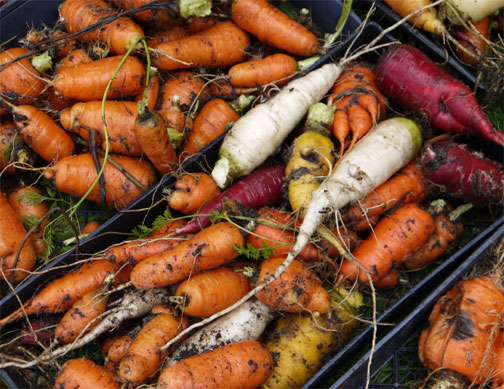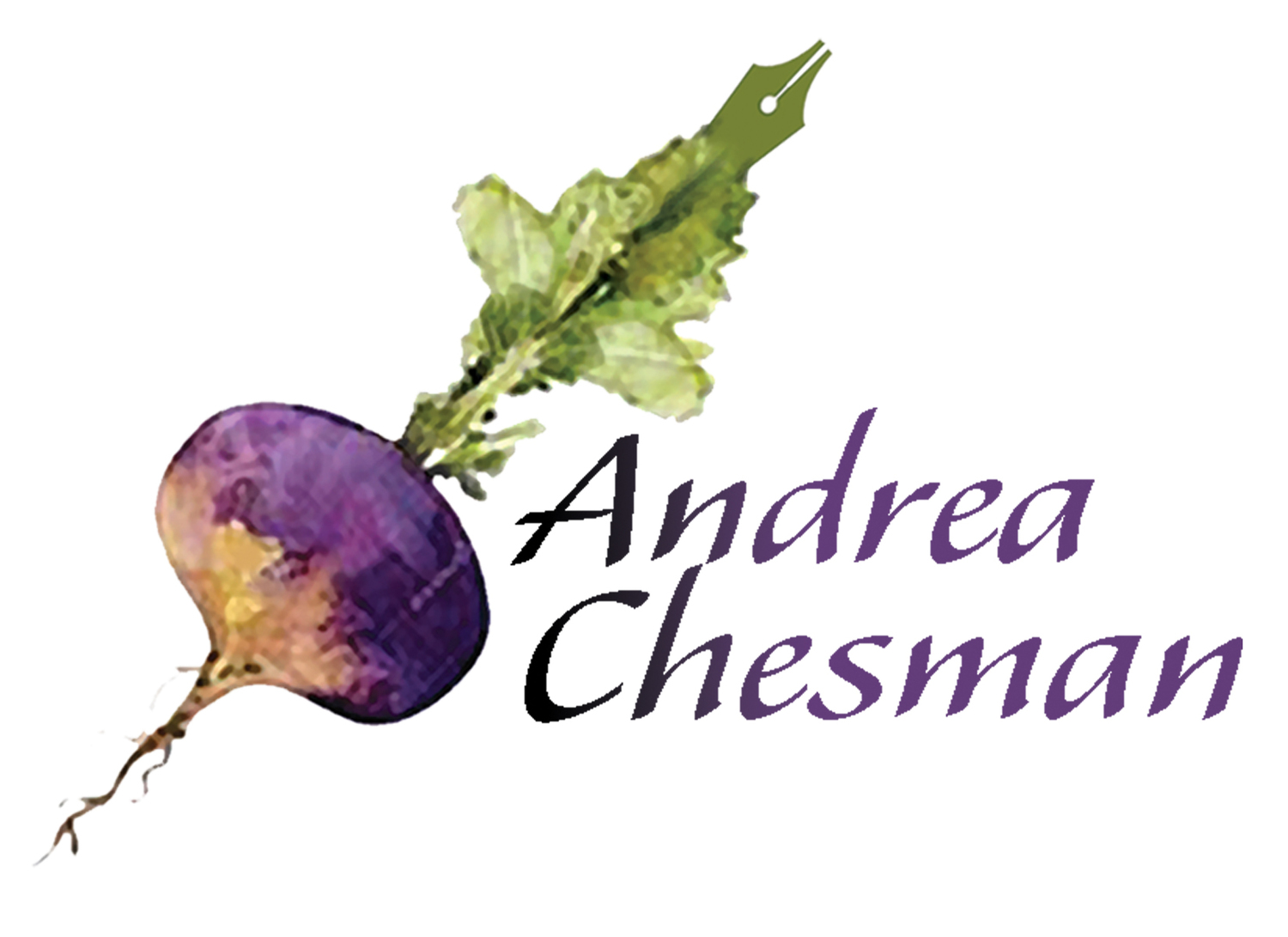My son took over a large part of my vegetable garden this year. The plan was that he would grow storage crops, while I got to experience life as a CSA member. Both experiences were great.
But now we are flooded with roots. There are sixty pounds of carrots chilling in my extra refrigerator (The basement steps where I’ll store my root vegetables is not cold enough yet.). I have onions, potatoes, beets, and Gilfeather turnips – some farm-bought, some homegrown.
The carrots are weighing heavily on my mind right now. I usually use up about one pound a week. The sixty pounds he harvested? More than we need. My son thinks I should make carrot soup more often. I’ll be roasting them for sure, adding them to soups, grating them into salads, and even pickling some of them them. Turns out the rest of the family really loves cooked carrots (though not met) and would be happy to have them show up more frequently at the dinner table.
 Sixty pounds of carrots
Sixty pounds of carrots
But back to the carrots. I wasn’t aware of the varieties, or I would have plundered the Little Fingers and Tonda di Parigi earlier this summer when they were at their optimal sizes. You see, my son swapped seeds with friends and didn’t tell me he was chosing to grow some of the carrot varieties past optimum size because he couldn’t figure out how he would store them. In any case, here’s what I know about the carrots he grew:
Little Finger. Developed in France for canning and pickling. Nice orange color; should have been harvested when about 3 inches long.
Tonda di Parigi Carrot. A 19th-century Parisian heirloom, deep orange, best harvested young, creamy and sweet when cooked.
Kuroda. An 8-inch long, deep orange, carrot with a blunt tip. Supposedly very good for juicing.
 This one is a monster.
This one is a monster.
Danvers 126 Half Long Carrot. The Danvers variety dates back to the 1870s, and this strain was developed in the 1940s. It’s an American classic.
Red Core Chatenay. No red core at all, but a standard, classic 5- to 7-inch carrot with smooth sides that taper to a blunt tip.
Atomic Red Carrot. It’s beauty is only skin deep, but the carrot is theoretically very high in lycopene, which has been shown in studies to help prevent several types of cancer.
Scarlet Keeper Carrot. A lovely orange carrot that is supposed to store very well.
Napoli Hybrid. An extra-sweet carrot with a fine texture.
As my son harvested the carrots, he carefully separated them in trays, casually rinsed them with water from the hose, and refrigerated as many as he could. The remainder went onto the too-warm basement stairs. I thought the dirt that was clinging to them was sucking out moisture. So I washed them and bagged them, and in so doing, destroyed his classification system, and now we aren’t sure which carrots are which.
Last night I was cooking some Chinese dishes, so I made a carrot pickle to go with it all. I usually make this pickle with a mixture of carrots and daikon radish, but our daikon radishes all went into the compost pile. These daikon grew to enormous size, bolted in the heat, and developed all the sharp, sulfurous flavors of a turnip and none of the sweetness that would balance it. No problem, though; carrots only work just fine.
 Chinese Spicy-Sweet Pickled Carrots.
Chinese Spicy-Sweet Pickled Carrots.
Chinese Spicy-Sweet Pickled Carrots
Makes about 1 quart
1 pound carrots, cut into matchsticks2 teaspoons salt1 cup water½ cup sugar1/3 cup mirin1/3 cup rice vinegar¼ cup distilled white vinegar6 thin slices fresh ginger 1 clove garlic, sliced1 dried red chile
1. Combine the carrot with the salt in a bowl and mix well. Cover with ice water and let sit for at least 2 hours, up to 6 hours.
2. Combine the water and sugar in a small saucepan and heat, stirring, until the sugar completely dissolves. Remove from the heat and stir in the mirin, rice vinegar, white vinegar, ginger, garlic, and chile. Let cool to room temperature.
3. Drain the carrots and pack into a clean pint jar. Strain the brine, discarding the ginger and garlic and pour in. Add the dried chile, if desired. Seal. Best flavor will develop if you can allow it to cure for at least 1 week before eating.
Adapted from The Pickled Pantry.©2012 Andrea Chesman. All rights reserved.

